When Michael Braby’s enormous 2-volume tome Butterflies of Australia : Their Identification, Biology and Distribution was published in 2000 it included 9 species of Ant-Blues, a group of small and elusive butterflies classified in the genus Acrodipsas.
In 2004 a 10th species, the Northern Ant-Blue (A. decima) was described, having been found hilltopping at Mount Burrell in the Northern Territory. The new species was included in the 2nd edition of Braby’s Complete Field Guide to Butterflies of Australia, having being identified too late for inclusion in the 1st edition published back in 2004.
The tally has since risen to 11 after Don & Mick Sands described Acrodipsas violacea, a species so new and so rarely encountered it has yet to receive a common name, though I’m guessing it’ll be Violet Ant-Blue. Their paper was published in the Australian Entomologist journal in December 2015 under the catchy title “Review of variation in ‘Acrodipsas cuprea’ (Sands, 1965) and ‘A. aurata’ Sands, 1997 (Lepidoptera: Lycaenidae), with descriptions of a new subspecies of ‘A. cuprea’ and a new species of ‘Acrodipsas’ Sands from inland Southern Queensland”, which probably explains the absence of coverage in TV news evening bulletins.
The Copper Ant-Blue (Acrodipsas cuprea) was considered to have geographical variations known as forms, such as a copper form, blue form and brown form. Based on morphological features Don and Mick split A. cuprea into 2 species, with the “blue form” becoming the new species Acrodipsas violacea. I’m not going to go into detail about these morphological features as it would pretty much require me to regurgitate most of the paper and, to be honest, it is a bit dry (sorry Don & Mick!). Anyone wanting to read it all can download a copy of it here; it costs $8 which I think isn’t bad for a new species. I’m willing to bet it’s going to cost me more than that to get photos of this butterfly…
A.violacea is found in inland southern Queensland, and has mainly been found on hilltops in the area from Cecil Plains through Millmerran and down to the south of Warwick. The males have more of a coppery-brown upperside, and are more likely to have violet-blue patches near the base of the wings than their cuprea equivalents. Female violacea have larger blue areas on the upperside than cuprea, extending further out from the body.
Mick was kind enough to send me the following photo of paratype specimens of A. violacea :
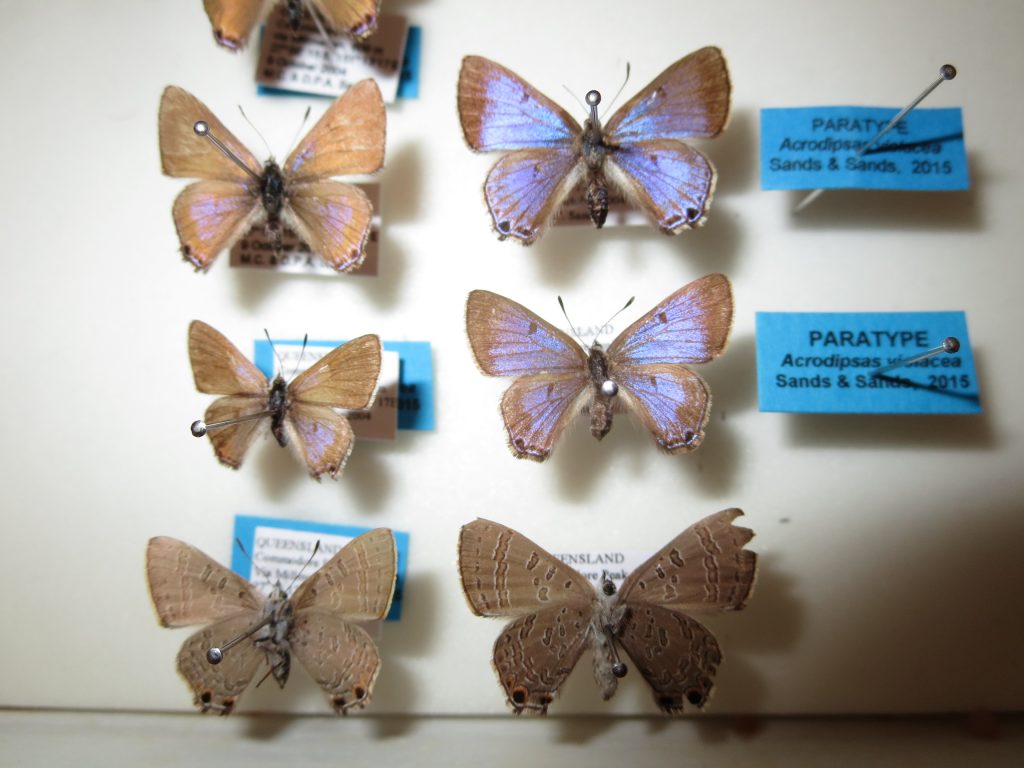
The remainder of A. cuprea was further split into 2 subspecies :
- A. cuprea variabilis is the northern subspecies, found in northern NSW and coastal SE QLD, though extending as far inland as the Blackdown Tableland in the northern part of its range.
- A. cuprea cuprea is the southern subspecies, found in coastal and subcoastal Victoria and NSW. Males differ from variabilis in having a coppery area at the base of the forewings. The females are more difficult to distinguish, as the extent of the blue areas are variable in both subspecies.
As far as I am aware no photos of live, wild Acrodipsas violacea exist on the internet and unfortunately I haven’t taken any myself. However, I have seen a couple of other photos of set specimens.
In December 2018 a collector named Ross McLaren contacted me through my website asking about specimens he’d taken on a hill to the south of Warwick. I passed his email and photos onto Mick Sands, who confirmed that they were indeed A. violacea. Ross kindly allowed me to use his photos showing the upperside and underside, though unfortunately the blue on the male doesn’t show up very well in the upperside photo.
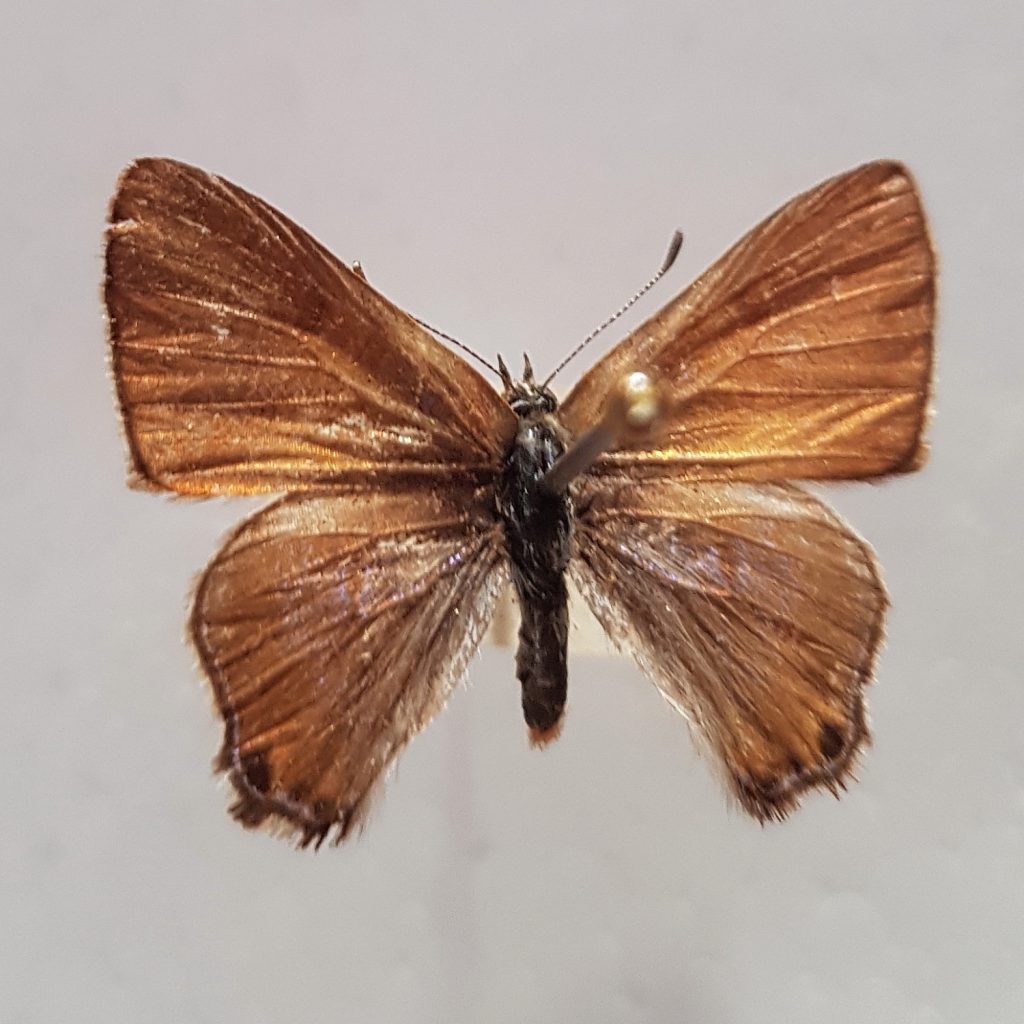
male upperside
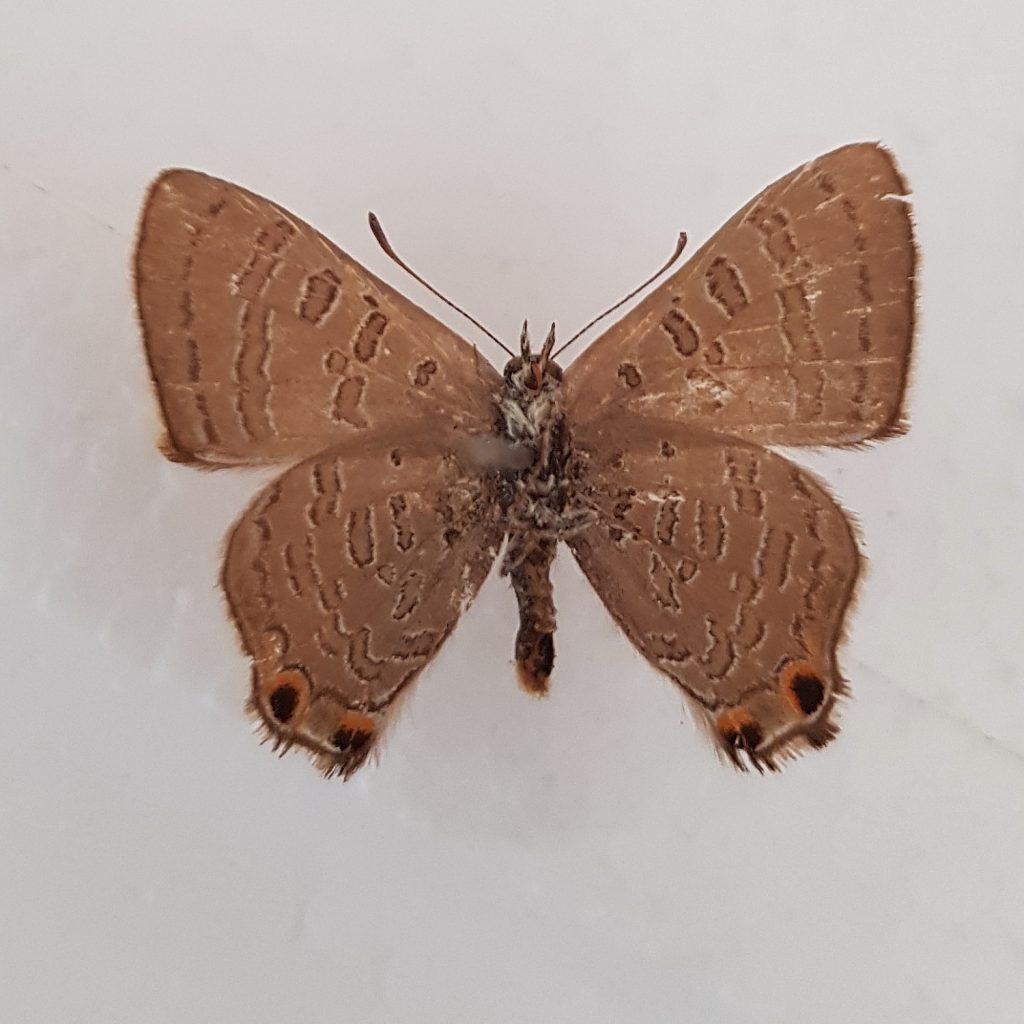
male underside
I haven’t been able to find much more about A.violacea on the web. The only things of interest I came up with were :
- The species page on the Atlas of Living Australia, which is useful because it includes a map showing where specimens have been reported. You can click on individual records to get details of the date, location etc.
- Back in 2017 change.org created an online petition to try to prevent destruction of some of A. violacea’s habitat.
Naturally, the addition of A. violacea to the Australian list means that there is yet another species I need to find and photograph. I did send Mick an email telling him and Don that under no circumstances are they to discover any more new species, unless they promise to take me along so I can get photos. Somehow I doubt they’ll comply. It’s plain from their paper that plenty of research work remains to be done on the Ant-Blues, so I wouldn’t be surprised if more species are lurking on remote hilltops waiting to be discovered.
The good news for me was that I already had photos of specimens of what are now A. cuprea cuprea and A. cuprea variablis, so at least I was able to increase my own subspecies count by one.
Here are a couple of my own photos of these two subspecies :

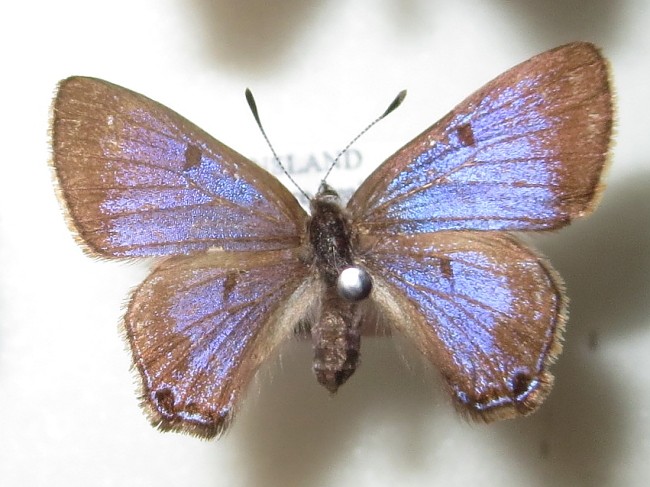
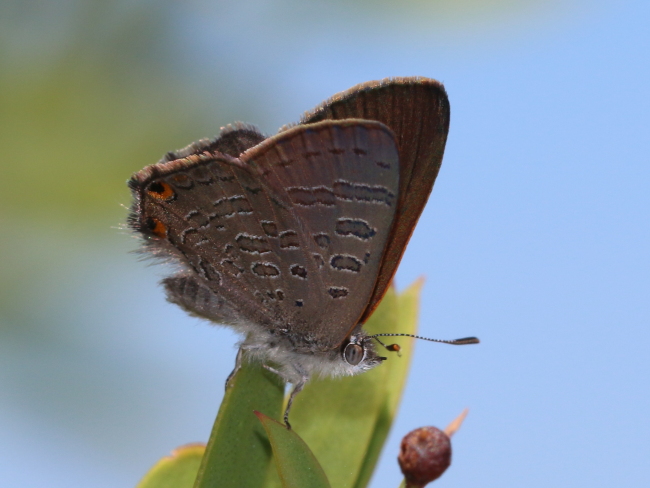
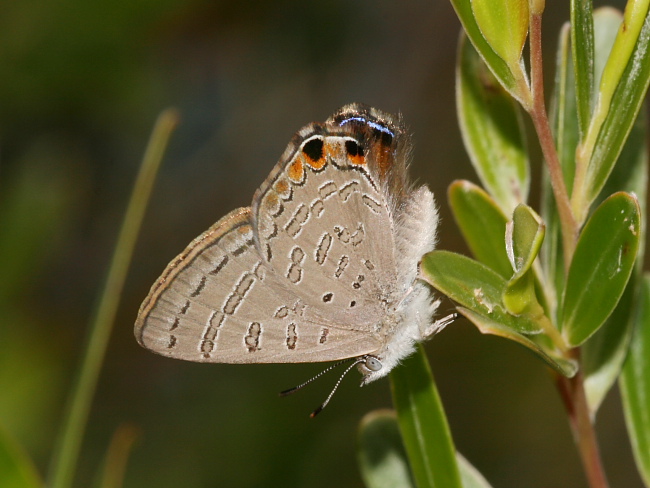
Martin you’ve got a helluva lot of species there…ones I have never seen (lots). I’ll bet plenty of experienced Lepidopterists same thing.
Website is not only beautifully done, its is an outstanding field guide with environmental settings, seasonal and habitat info…its all there. And the butterflies are living and flying in real time, not in a drawer with a number-three pin.
Fond memories — trying to get sunny weather at Jenolan, trekking miles and miles to the Brisbane A. arcana spot.
And one stands out, you and I spotting that perfectly emerged H. mastersi near Blackheath….like how you’d make the perfect shot and how I’d line up and capture the lil fella. That cammo underside (Mastersi) reminds me of a desert painted fighter jet.
Its jolly hard yakka. The weather in this continent may be mild but a brilliant sunny dawn can turn to a misty cold fog after a couple of hour’s journey.
Places like Cathedral Rock where lightning bolts may be hitting nearby Like dangerously nearby) yet the sun will be shining on that Pimelea blossom where you’ll be perched waiting for that perfect shot with that lense.
As they say with Pokemon: “gotta get ’em all”.
Thanks Mick!
To be fair the species pages have very little info except for the photos and the date/place where I took them, but I do plan to improve this over time. And though I try to get all my photos in the wild (though I have cheated a bit with some of the more difficult species), I do wish someone would create a website of set specimens from their collection. I think it would be a really useful resource, especially for identification purposes.
I too have fond memories of our butterflying expeditions together. As for Cathedral Rock – I’ve been there twice and still don’t have any shots of Hesperilla hopsoni. I saw several of them the second time I went, but none of them settled even for a second. Sometimes I really think collectors have it way too easy 😉
Yeah think you and I went to Cecil Plains area looking for A. violacea but squat flying except some Paralucia. Maybe 2008? Remember the bronze sundial up on top of the ridge? Shows how few humans have been there; that sundial would be older than both of us and fastened by four half-inch-bolts yet nobody’s touched it. Pretty sure all that Dunmore S.F. has pretty significant Indigenous history — Bigambul Nation — and on days I used to drive the 480 Kms (return) journey and nothing flying I’d search the sandstone caves in vain looking for paintings on the walls or things on the ground.
Such a shame the A. violacea weren’t “on” that day!! I apologise null sightings, oh well.
Yeah, once you get away from the cities here the Great Outback is pretty good. If I had the $$$ I’d get one of those new Landcruisers with the fold-out living quarters, sleep in that and move around. Equipped with 100 litres of water, double that in diesel, my butterfly gear and a sat-fone.
Anyhow I always like to check out the wildlife, geology, climate & history and everything else about these wild places.
You took me up to Cecil Plains on 12/11/2008; it was a Wednesday I believe. There was absolutely nothing flying at the top at all, let alone any A.violacea. Further down the hill I found a couple of Paralucia pyrodiscus; one male and one female. It was quite a long way to go to see so little! No doubt there are times when it’s a great site, but not that particular day 🙁
Distinguishing A. cuprea from A. violacea….I’m not a taxonomist (read the paper for all the real science) but from a field operator’s POV, Cuprea is larger and slower flying. Violacea is fast, flies high and later in the day. It also sits for ages and to me looks more like Brisbanensis in its habits.
Preserved specimens are more slim-line. The concave termen of the hind-wing is distinctive.
The ventral wing surfaces vary but tend to be sandy, as are the dorsal surface with blue scales that really shine in a newly caught specimen.
On the Cecil Plains hill-top I have collected A. violacea in November and classical male brown A. cuprea in April. But all males unfortunately; if only we had some females from that location.
I am aware of A. cuprea specimens captured near Mt Kaputar in NSW. However I’ve never seen them although they are typical brown ones. Kaputar is a long way from the coast.
On Commodore south of Millmerran caught males and females of A. violacea but about 2007 a tornado took out the breeding tree, an old stump about 18 feet high where the females would come up and mission-round all the time chased by males as well as naughty Ogyris that would chase them.
One thing — over time specimens of Acrodipsas mortoni, cuprea, arcana, violacea suffer from a phenomena where internal fats and oils spread over the wings like a ‘western-blot’, thus spoiling the natural appearance. Nearly always the males; the females don’t suffer from this often. The greasy fat will cover the blue scales on Violacea and totally ruin the beautiful graded brown on Arcana.
The way to fix this staining is to immerse and wash the specimen gently in either Acetone or Di-ethyl-ether.
As a final note, specimens of true A. cuprea caught on the Sunshine Coast do have blue scales in rare occasions — usually Spring Time brood. But then again I have a male Acrodipsas brisbanensis with generous blue scales on the dorsal surface. And some Violacea have the sandy dorsal surface with very few blue scales but still very streamlined.
Thanks for the info Mick, much appreciated.
So not only are they very hard to find but they stay higher up? Methinks it’s going to be a challenge to photograph them in the wild…
Yep, easier to get a snap of Javanese Rhino or David Deer in the wild.
Mick, I absolutely forbid you to describe any more new species, unless the butterflies in question are willing to cooperate with me and allow me to take close-up photos of them 😉
Hi from Millmerran. The hilltop home of Acrodipsas violaceae is under imminent threat. DAFF want to sell it and let it be used for a basalt quarry. We hope to stop them but need all the help we can get.
Thank you, Brenda.
Damage and excavations of this mountain can be seen very easily on satellite images.
One must wonder, how much off the country is going to be deforested?
We’ll end up with no trees left.
Positive note, the butterfly is nowhere near the quarry (I will not geolocate it) but that’s not the point, the damage is unacceptable.